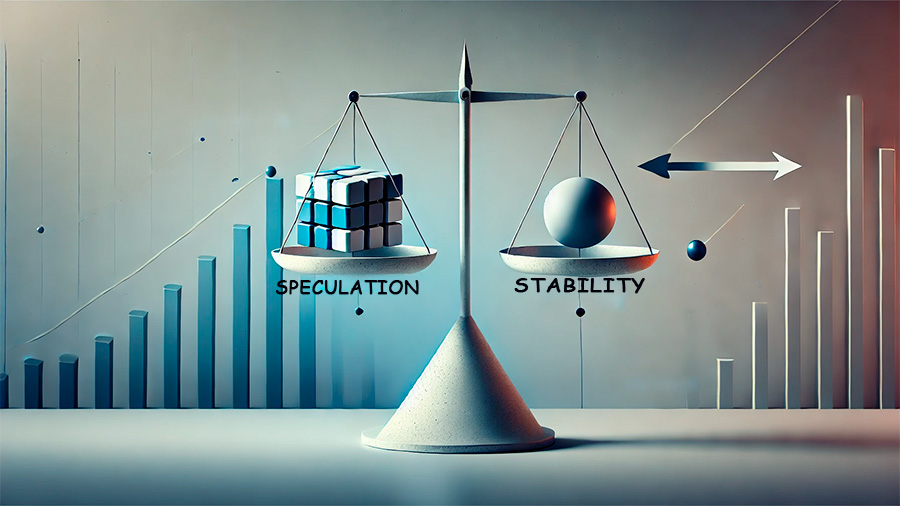Futures and Speculation: Balancing Market Efficiency and Volatility

Futures markets play a crucial role in the global economy by allowing individuals and institutions to hedge risks and speculate on the future prices of commodities, currencies, and other financial assets. Speculation in these markets, while often a driving force behind price movements, can lead to increased volatility and pricing fluctuations. This article explores the relationship between futures markets and speculation, examining how speculators influence pricing, market dynamics, and the broader global economy.
Understanding Futures Markets
A futures contract is an agreement to buy or sell an asset at a predetermined price at a specific point in the future. Futures markets are used by hedgers to protect against price fluctuations, and by speculators who aim to profit from those fluctuations. These markets cover a wide range of commodities, such as oil, gold, agricultural products, and financial instruments like currencies and interest rates. Futures trading allows for price discovery and can provide liquidity to markets, but it also introduces the potential for speculative bubbles.
1. The Basics of Futures Contracts
Futures contracts are standardized agreements that are traded on exchanges, with specific terms such as the quantity of the asset, the contract expiry date, and the delivery mechanism. Buyers of futures contracts commit to purchasing an asset at the contract price at the designated time, while sellers agree to deliver the asset at that price.
Key characteristics of futures contracts:
- Standardization: Futures contracts are traded on organized exchanges, and their terms are standardized to facilitate trading and clearing.
- Leverage: Futures allow traders to use leverage, meaning they can control a larger position with a smaller initial investment.
- Settlement: Futures contracts can either be settled in cash or through physical delivery of the underlying asset, depending on the contract specifications.
2. Speculation in Futures Markets
Speculation involves buying or selling futures contracts based on predictions about future price movements, rather than for the purpose of hedging risk. Speculators are typically motivated by the potential for profit from price changes, which can be significant in volatile markets. While speculators contribute to market liquidity, their activities can also amplify price swings and create short-term volatility.
How speculators influence futures markets:
- Price discovery: Speculators play a key role in determining the market price for commodities and financial assets. Their buying and selling decisions reflect their expectations for future market conditions, which in turn helps establish prices for hedgers and other market participants.
- Market liquidity: Speculators provide liquidity to the futures market, making it easier for hedgers and other investors to enter or exit positions without significantly affecting market prices.
- Increased volatility: Speculators often contribute to increased market volatility, especially when they react to market news, trends, or geopolitical events. Sudden shifts in sentiment can lead to large price movements in a short period of time.

The Impact of Speculation on Pricing and Volatility
Speculation can have a profound impact on the pricing and volatility of the underlying asset in futures markets. While speculation is a natural part of free markets, it can lead to both positive and negative consequences. Understanding the dynamics of speculative trading can help market participants navigate these fluctuations and make informed decisions.
1. Price Volatility in Commodities and Currencies
Speculators in the futures market often drive significant price fluctuations, especially in commodities like oil, gold, and agricultural products. While such fluctuations can present profitable opportunities for traders, they can also cause disruptions for producers, consumers, and businesses relying on stable prices.
How speculation impacts commodity prices:
- Increased price swings: Speculative activity can lead to rapid price increases or decreases as traders react to perceived changes in supply and demand, geopolitical risks, or other market factors.
- Short-term market distortion: Speculators may push prices above or below their true market value, creating temporary price distortions that can mislead other market participants.
- Risk for producers and consumers: Producers may face uncertainty when setting prices for their goods, and consumers may experience higher costs due to artificially inflated prices caused by speculative trading.
2. Speculative Bubbles and Their Consequences
One of the most significant risks associated with speculation in futures markets is the creation of speculative bubbles. When excessive speculation drives prices well beyond their intrinsic value, a bubble can form, leading to a sudden and often painful market correction. This process can destabilize markets, cause losses for investors, and trigger wider economic repercussions.
Examples of speculative bubbles:
- The dot-com bubble (1990s): Speculation in technology stocks, fueled by optimistic projections, led to the formation of a bubble that eventually burst, causing significant financial losses.
- The housing bubble (2008): In the years leading up to the financial crisis, speculative investments in housing markets inflated property prices beyond sustainable levels, leading to a crash when the bubble burst.
- Oil price volatility: Speculative trading in oil futures has contributed to sharp price movements, such as the extreme volatility during the 2008 financial crisis, which had a cascading effect on global economies.

Managing the Risks of Speculation
While speculation is an integral part of futures markets, it can introduce significant risks. Investors and policymakers must take steps to manage the impact of speculation on market stability. This involves understanding the behavior of speculators, implementing regulatory measures, and utilizing risk management strategies.
1. Hedging Strategies for Risk Management
For businesses and investors who rely on stable prices, hedging is an essential strategy to mitigate the risks posed by speculative price swings. By using futures contracts to lock in prices, hedgers can protect themselves from unexpected price movements and avoid the negative financial consequences of volatility.
Types of hedging strategies:
- Long hedging: When a business expects the price of a commodity to rise, it may take a long position in futures contracts to lock in current prices and protect against future price increases.
- Short hedging: Conversely, businesses expecting a price drop may use short positions in futures to lock in current prices and avoid losses due to falling prices.
- Cross-hedging: Some businesses use futures contracts on related assets to hedge against price fluctuations in a different market or product.
2. Regulatory Measures to Mitigate Speculative Risks
To reduce the negative effects of excessive speculation, governments and regulatory bodies often introduce measures to stabilize futures markets. These may include position limits, margin requirements, and transparency initiatives designed to ensure that speculative trading does not excessively distort market prices.
Regulatory tools to address speculation:
- Position limits: Regulators can set limits on the number of futures contracts that any single trader or institution can hold, preventing excessive concentration of market power.
- Increased transparency: Requiring greater transparency in futures markets allows market participants to better understand price movements and the factors driving them, reducing the impact of speculative bubbles.
- Margin requirements: By increasing margin requirements for futures contracts, regulators can reduce the leverage available to speculative traders, helping to minimize the risk of large-scale market disruptions.
Conclusion
Speculation plays a central role in futures markets, influencing pricing, volatility, and market dynamics. While speculative activity contributes to price discovery and liquidity, it can also lead to increased volatility and the creation of market bubbles. By understanding the relationship between futures and speculation, market participants can better navigate the risks associated with these markets. Through effective hedging strategies and regulatory measures, the negative impacts of speculation can be minimized, helping to stabilize markets and protect investors from excessive financial risk.
